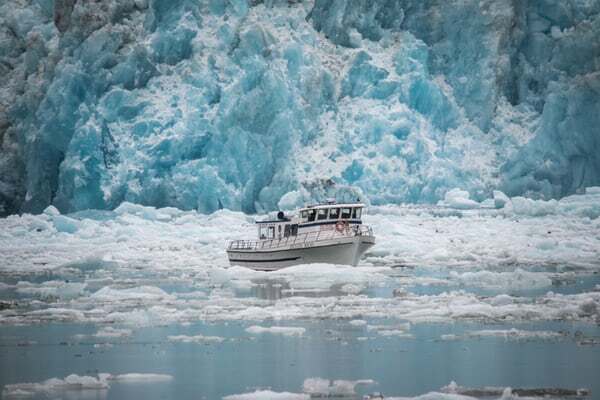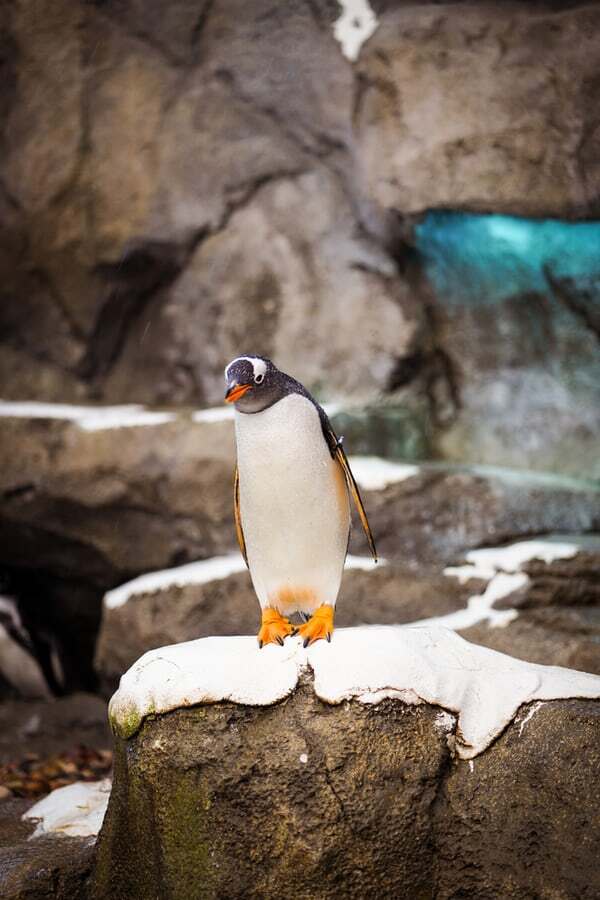Experiencing the Breath-taking Reality of the White Continent

How addiction recovery gave me new opportunities to explore the world!
– Chander Mahadev
After years of drinking and drugging, I got into recovery at Hope Trust rehab. I started looking at life through a different lens – a cleaner, more objective perspective. My relationships with family started healing. Trust and forgiveness replaced shame and guilt. It was time to reward ourselves with a treat. My wife and I decided to go for a cruise.
After considering various options, we decided to embark on a 11-day Antarctica Expedition. When a near-forbidding inter-continental dream becomes a shivering reality, it is hard to live down. The 11-day Antarctica Expedition with a majority of home-grown Indian explorers made it an exotic journey complete with an oriental twist. The fact that this was only the second Indian expedition to the White Continent only added to the charm.
 The pristine, pure environment, the intriguing and desolate white-hued portraits of nature etched against the bluest of skylines, glaciers and icebergs that painted humongous landscapes welcomed us at this White Continent. First impressions apart, even as the 200-odd motley group of high-strung passengers boarded L ‘Austral, the luxury yacht, the excitement was palpable. We boarded the ship at the quaint Argentinian port town of Ushuaia, known as the ‘end of the world.’ The Captain of the ship Erwann Le Rouzic, and the Cruise Director Mria Paz Garcia Pintado, welcomed us on board, in what turned out to be the expedition of a lifetime.
The pristine, pure environment, the intriguing and desolate white-hued portraits of nature etched against the bluest of skylines, glaciers and icebergs that painted humongous landscapes welcomed us at this White Continent. First impressions apart, even as the 200-odd motley group of high-strung passengers boarded L ‘Austral, the luxury yacht, the excitement was palpable. We boarded the ship at the quaint Argentinian port town of Ushuaia, known as the ‘end of the world.’ The Captain of the ship Erwann Le Rouzic, and the Cruise Director Mria Paz Garcia Pintado, welcomed us on board, in what turned out to be the expedition of a lifetime.
On board the L ‘Austral, there was celebration in the air as 2018 was drawing to a close, and we were to usher in the New Year by setting foot on the unconquered continent. There were lavish meals, dances and games arranged for the guests. Booze flowed freely, but I had to keep in mind my new-found sobriety while declining all alcoholic beverages. If not for the therapy I had received at the rehab, I would have literally ‘drowned’ myself in the free-flowing alcohol!
We entered the dreaded Drakes’ Passage. It is said that if there is one passage that visitors, scientists and other sailors fear, it is Drake’s Passage. Sea-farers will tell you that you have to earn the right to see the White Continent. The “Antarctica Convergence” zone, where the northward-flowing Antarctic waters meet the warmer equatorial waters, is home to a wide variety of marine wildlife.
Chosen Ones
The Captain informed us on the PA system that we indeed were the ‘chosen ones,’ since the passage was never as calm and welcoming, as it was on our expedition. This was greeted with a loud roar by the ‘civilized buccaneers’ who had embarked on the voyage to conquer their fears, and in the process, the continent.
On the morning of December 31, we were thrilled to see the elusive albatross. This bird has been the inspiration of countless poems and stories, resonating the mysteries and tragedies of the sea. These feathered giants have the longest wingspan of any bird—up to 11 feet. The wandering albatross is the biggest of some two dozen different species, informed an excited Manuel Marin, the Birder Specialist onboard L’Austral. For, over the last 12 years, he has made nearly 100 trips to Antarctica. He has ample experience in the Sub-Antarctic region as well. There were as many as six wildlife experts and marine biologists who shared their nuggets of wisdom on each day while briefing us about our daily explorations.
Paradise on ice
 The next morning, we reached Neko Harbour in Paradise Bay. Paradise Bay is truly a paradise on ice. Many of the reasons whalers considered Paradise Bay to be so idyllic nearly a century ago, still apply today. As we made our first landing while disembarking, most of us were apprehensive even while wearing a nervous smile. We had been given 20 minutes to wear the layers of warm clothes, with a parka as the outermost skin. We were all now 10 kgs heavier. Added to this was the wind whistling through our parka caps and the icy cold wind cutting through our warm mittens. All of us also had snow sticks to carry and cameras slung across our necks, to capture images for posterity.
The next morning, we reached Neko Harbour in Paradise Bay. Paradise Bay is truly a paradise on ice. Many of the reasons whalers considered Paradise Bay to be so idyllic nearly a century ago, still apply today. As we made our first landing while disembarking, most of us were apprehensive even while wearing a nervous smile. We had been given 20 minutes to wear the layers of warm clothes, with a parka as the outermost skin. We were all now 10 kgs heavier. Added to this was the wind whistling through our parka caps and the icy cold wind cutting through our warm mittens. All of us also had snow sticks to carry and cameras slung across our necks, to capture images for posterity.
As we slipped on our knee-length Dunlop gumboots, I felt no less than Francis Drake, the original buccaneer who conquered Drake’s Passage. Only 10 fellow-travellers were lowered into each zodiac (there were more than 15 of them) and barring a side rope we were exposed to the elements. An experienced escort was on hand to allay our fears and answer our queries even as the zodiac flung itself on to the choppy sea. Waves of cold ice lashed against our parkas and wails and screams rent the air. The first few minutes were numbing. However, within five minutes, most of us had settled down on the zodiac, and our escort gave us a ‘warning drill.’ He told us how we should not lean on to the side to catch a glimpse of marine life and not to stand up on the zodiac to click a photograph. By now we had reached Neko Harbour. We met different kinds of wise-looking seals lazily basking on icebergs that greeted us on our first landing.
As we set foot on Antarctica, a feeling of calm descended on us. We had finally managed to live out our dream of standing on the white forbidden continent that is Antarctica. The next nine days were daily encounters with wildlife peculiar to the mainland. We encountered 16 kinds of Penguins, who were ever so eager to communicate. They took a particular liking to us human beings, and we had to be careful not to come closer than 5 metres, the designated distance spelt out in the Antarctica Treaty. We also encountered many penguin highways, which gave them the right of way. Every cruise and landing made each one of us face our fears even as we became more comfortable with the unexpected turn of the weather.
Final Stop
Port Charcot, Hidden Cove, Wilhelmina Bay, Brown Bluff and Deception Island were the places we touched on our cruises and landings. Our final pit stop was Deception Island. It is an island in the South Shetland Islands archipelago, with is one of the safest harbours in Antarctica. The island is the caldera of an active volcano, which severely damaged local scientific stations in 1967 and in 1969. It has become a popular stop for the travellers since it boasts of vast colonies of Chinstrap Penguins. As we crossed Drake’s Passage on our return journey, it was 11 days of sheer bliss coming to an end. It was time to part ways. We had conquered our fears. Varsha Deshmukh, a co-traveller had the pithiest comments to make on our expedition:
“Antarctica is like human nature, the more it reveals, the less you know about it. Like human nature, life changes every hour on Antarctica.”
I am ever so grateful for the experience, which wouldn’t have been possible if I was continuing on my downward spiral of addiction. Recovery opened new vistas, literally, and Antarctica was the jewel on the crown!